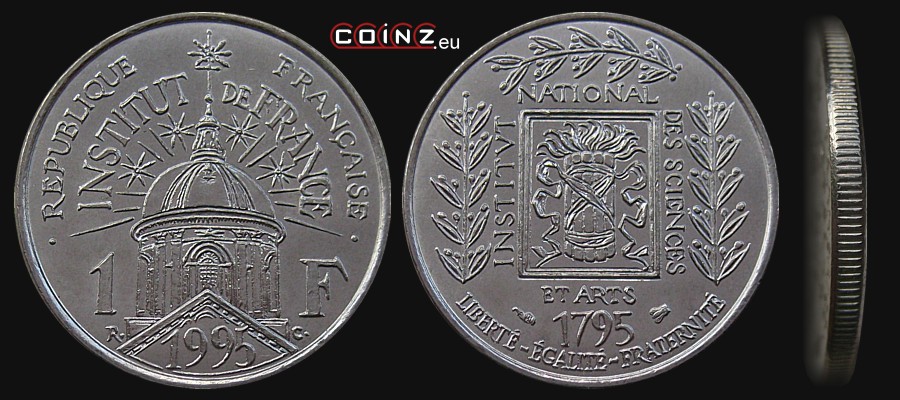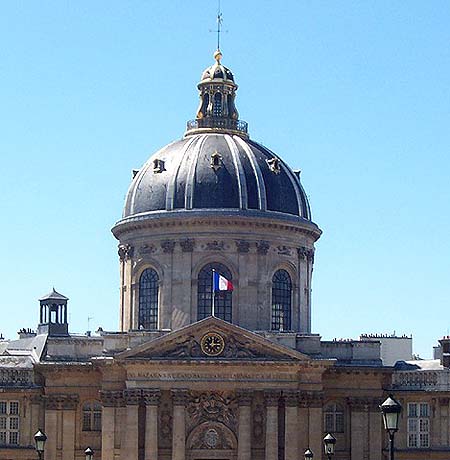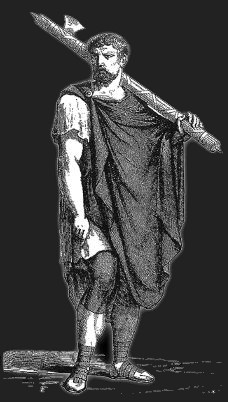1 franc FRANCE (1995) Institut de France


| diameter: | weight: | thickness: | alloy: |
| 24.0 mm | 6.0 g | 1.8 mm | Ni98 |
obverse:
in the coin centre the dome of Institut de France divides face value: 1 / F (FRANC), along the top edge in two lines: • RÉPUBLIQUE FRANÇAISE • / INSTITUT DE FRANCE (French Republic, Institut de France); on the bottom year of issue 1995
reverse:
in the coin centre inside a rectangle burning fasces lictoriae, around four sides of rectangle inscription: INSTITVT / NATIONAL / DES SCIENCES / ET ARTS (National Institute of Science and Arts); on the sides and above laurel branches; on the bottom date: 1795; along the bottom edge motto of France: LIBERTÉ - ÉGALITÉ - FRATERNITÉ (liberty, equality, fraternity)
edge:
reeded
issue date:
??? no data
withdrawal date:
18 II 2002
designer:
Raymond Corbin (initials R.C. divided by the institute's dome on the bottom of the obverse)
mint:
 La Monnaie de Paris (The Paris Mint), Pessac (mint mark before year 1795 in the reverse, after year 1795 privy mark of mint's director Pierre Rodier - bee)
La Monnaie de Paris (The Paris Mint), Pessac (mint mark before year 1795 in the reverse, after year 1795 privy mark of mint's director Pierre Rodier - bee)
mintage:
| 1995 | 4 976 011 |
mint marks:
interesting facts:
The commemorative coin of 1 franc from 1995 commemorates the 200th anniversary of the Institut de France. This French scientific society was founded on October 25, 1795 and brings together five academies (académies), of which the most famous and oldest is the French Academy. The seat of the Institute is located on the southern bank of Seine vis-à-vis the Louvre. Both buildings are connected by the famous bridge Pont des Arts. Below a picture of the dome of Institut de France.

photo licence: CC-BY-SA 3.0
Fasces lictoriae was a symbol of power in the Roman Empire. Lictors were leading procession of rulers and officials carrying in hands the rods and an ax tied together with a strap. Amount of rods was related to the position in the political hierarchy. The symbolism of fasces was adapted by the Republicans and the fasces is today placed in French Coat of Arms. The word fasces gave the name to a political system - fascism.
Roman lictor carrying fasces.

photo licence: CC-BY-SA 3.0

photo licence: CC-BY-SA 3.0
Fasces lictoriae was a symbol of power in the Roman Empire. Lictors were leading procession of rulers and officials carrying in hands the rods and an ax tied together with a strap. Amount of rods was related to the position in the political hierarchy. The symbolism of fasces was adapted by the Republicans and the fasces is today placed in French Coat of Arms. The word fasces gave the name to a political system - fascism.
Roman lictor carrying fasces.

photo licence: CC-BY-SA 3.0
last update: 20 XI 2013
coins catalogue :: katalog monet :: münzkatalog :: catalogue de monnaies :: catálogo de monedas :: catalogo monete :: каталог монет :: κέρματα κατάλογος :: COINZ.eu
© 2010-2025 :: Adam Kubicki :: COINZ.eu :: All rights reserved.


